Good for Neighbors, Good for the Environment and Good for a Farm’s Operations
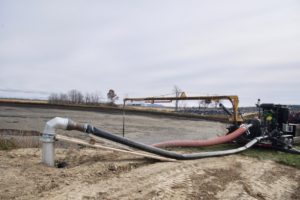
Liquid effluent is pumped from the barn’s storage pit
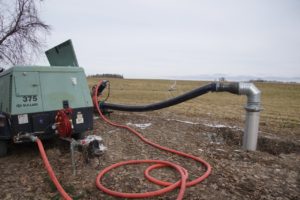
Effluent arrives at the field pump after passing through a pipe installed under the Davern Rd.
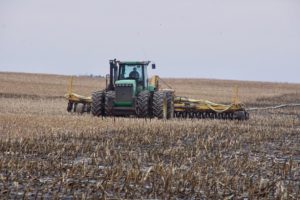
Tractor and injection implement on a 110-acre field adjacent to the Davern Rd.
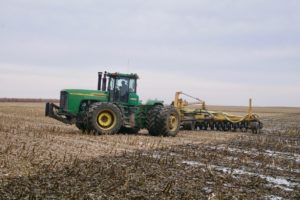
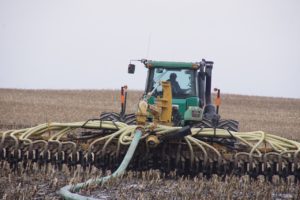
Close-up of the operator and machine at work.
By John T. Ryan
Peru – Adirondack Farms’ owner Jon Rulfs has good news for Peru residents. A few days ago he began using what is known as a dragline/draghose manure application system. Rulfs explained, “There will be less road travel by spreaders and trucks and there will be less odor.” Rulfs believes the system will be good for his neighbors, good for the environment and result in a more efficient farm. That’s important because Rulfs’ fields are near many Peru homes and his 5,700 cows and calves produce a huge quantity of manure.
The dragline system is the second recent investment Rulfs has made in manure handling. Two years ago he installed an anaerobic digester that transforms animal manure into a liquid effluent and biogas. The digested liquid emits significantly less odor and the biogas powers an electrical generator that feeds power into the NYSEG power grid.
The dragline system involves pumping the digested liquid effluent from the barn storage pit into a 12 inch diameter hard pipe for transport to nearby fields. When the liquid arrives in the field, it is pumped into a flexible hose that transports it to a 36-foot wide tillage implement for injection into 2 to 3 inch deep furrows. Odor is reduced because the liquid is immediately incorporated in the soil. Nutrients are also better retained and application rates are better controlled. Because the heavy trucks don’t traverse the fields, soil compaction is reduced resulting in increased crop yields.
Some liquid effluent will still have to be transported by truck to fields distant from the barn. It will be eventually pumped into satellite manure pits and applied by the dragline tillage machine at the appropriate time. Rulfs plans to introduce the new system on most of his 6,000 cultivated acres over a 5-year period.
Photos of manure handling from the barn to a 100 acre field on the north side of the Davern Road.
Posted: November 19th, 2018 under Agricultural News, Business News, General News, Peru News, Peru/Regional History.
